Daffodils, Jonquils, Paperwhites, Narcissus

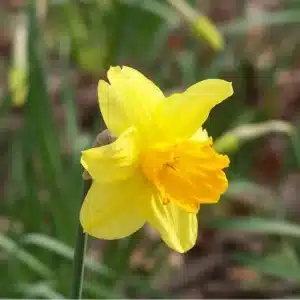
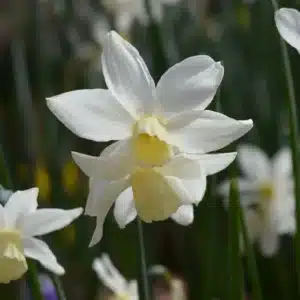
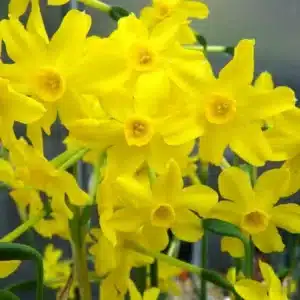
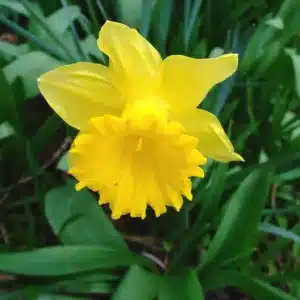
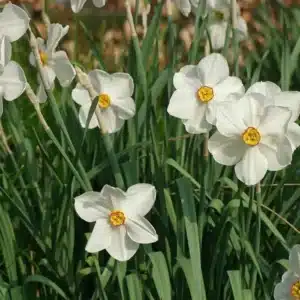
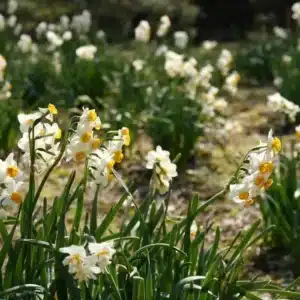
Daffodils perform best in full sun to partial shade. Daffodils are planted in the fall about 2 to 4 weeks before the first frost. The bulbs should be placed in a location that provides exposure to the full morning sun with some afternoon protection from the western exposure. Daffodils will tolerate a wide variety of soil conditions however the bulbs will rot in soil that remains too wet. The addition of organic matter and expanded shale is recommended. The addition of bone meal or superphosphate to the planting soil is also recommended. Plant in a 3-inch diameter hole of depth equal to twice the length of the bulb. The bulbs should be spaced 3-inches to 6 inches apart. A fertilizer best suited to bulbs should be evenly applied near the base of the bulbs together with a moderate application of agricultural sulfur. The prepared soil should be replaced to cover the bulbs. 2 -3 inches of high-quality mulch should be applied to suppress weeds and to maintain even soil temperatures.
Once Daffodils are planted there is very little immediate care needed until the stems and flowers emerge. Some taller – larger daffodils may require support to maintain an upright position. Daffodils should be watered whenever necessary to maintain an even degree of moisture. Naturalized Daffodils must be treated as perennial. The dead, drying flowers may be removed, however, the stems and leaves should be maintained as long as there is green remaining. The green leaves and stems return needed moisture and sugars to the bulb to allow for the next seasonal flowers and growth. In long-established naturalized Daffodil beds it may be necessary to “lift” (remove) the bulbs in order to separate the daughter bulbs. Some experienced gardeners advocate planting the bulbs in baskets that can be removed as a unit when bulb separation is needed. Daffodils may be held for months in cool to cold dry conditions (always above freezing) similar to the care given to Tulips.
Established daffodils are best fertilized at the time of planting. A mixture of horticultural sulfur and slow-release fertilizer should be placed in the soil surrounding the bulbs at the time of planting. Many experienced gardeners recommend bone-meal added into the area surrounding the daffodils at the time of planting. A slow-released low-nitrogen high potassium fertilizer should be applied to a daffodil bed in the early spring to promote leaf, stem, and flower growth.
Support is often necessary for the flowers and stems of plants with prominent flowers. The support should be applied before the stem breaks. Pruning is limited to the removal of dead leaves and spent flowers. The leaves should remain for at least six weeks. The seed heads can be removed when the flower petals fall. Green leaves should be allowed to remain on the plants until the leaves become brown. The plants should be completely brown before removing the dead plants at the ground level.
Daffodils contain Lycorine, other alkaloids (oxalic acid) which makes them unpalatable to rabbitts and other rodent pests. The plants are subject to few diseases.













